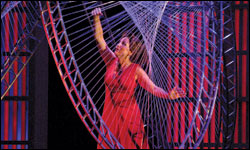In today's excerpt - in the fifteenth and sixteenth centuries, Florence led the Renaissance and was at the forefront of European commerce and ideas. But the trial of Galileo, a showpiece of the Counter-Reformation, ended that, and scientists and commercial adventurers knew they had to leave the Italian peninsula for a more tolerant home. That home was the Netherlands - a bastion for freedom in science, commerce and thought. As the best migrated to the Netherlands, that country parlayed its freedom and intellectual energy into global leadership, becoming the wealthiest and most advanced country in the world, replacing Florence and overshadowing England and France. The key engine of its wealth was a domination of world shipping trade, and in particular, its dominance of the spice trade - pepper, nutmeg and cinnamon - the rare east Asian spices which were perhaps the most valuable commodities in the world: "In the seventeenth and early eighteenth centuries, the Netherlands was arguably the wealthiest and most scientifically advanced of the European nations. This period, known as the Dutch Golden Age, brought a flourishing of the arts and sciences that reflected the period's unbounded optimism and affluence. Prosperous burghers and merchants became patrons of the arts,including sculpture, poetry and drama, and of public debates. They commissioned architects to design beautiful houses. Paintings and sculptures adorned the interior walls of these impressive homes. Rembrandt van Rijn, Johannes Vermeer, Jacob van Ruisdael and many others revolutionized painting, infusing new life into landscapes, portraiture and still life, as well as portraying contemporary life and society in the flourishing cities that were the most cosmopolitan in Europe. "In science, the list of internationally prominent luminaries included the philosopher Rene Descartes; acclaimed jurist and theorist of international law Hugo Grotius; mathematician, astronomer and inventor of the pendulum clock Christiaan Huygens; and Anton van Leeuwenhoek, ... founder of the study of microbiology. Book publishing flourished in the climate of tolerance and intellectual curiosity; ideas concerning religion, philosophy and science that were considered too controversial in other nations found their way into print in the Netherlands, and the books were secretly shipped abroad."The Dutch Republic, newly freed from Spanish domination and relishing its freedom, was admirably situated to dominate European trade by providing an artery into the interior. Thousands of ships crowded its many harbours. The great city of Amsterdam was the centre of the international trade in the exotic luxuries of the Americas, India and the 'Spice Islands.' The Amsterdam stock exchange, founded in 1602, was the world's first, created by the Dutch East India Company (VOC) for dealing in its own stocks and bonds. The VOC was the first-ever trading company with a permanent share capital. This jointstock company attracted huge wealth in initial capitalization from over 1,800 investors, most of whom were merchants and other wealthy middle-class citizens, and the speculation on the fluctuating value of these shares relied on the success or failure of the company's ships in bringing spices back to Europe from the Far East."The first great global corporation, the VOC was by the late seventeenth century the most powerful and richest company in the world. Its private fleet boasted nearly 150 merchant ships and 40 giant warships. At the height of its power, it employed nearly 50,000 people worldwide - seamen, artisans, stevedores, labourers, clerks and builders. The company was involved in a multitude of commercial activities, such as construction, sugar refining, cloth manufacturing, tobacco curing, weaving, glass making, distilling, brewing and other industries related to its global business enterprises. The payroll also included a 10,000-man private army."The VOC, one of the foundations of Dutch prosperity and with its mighty fleet a key force propelling the young republic to look to the world for commerce, held a virtual monopoly over the global spice supply."
Author: Steven R. Bown
Title: Merchant Kings
Publisher: St. Martin's
PressDate: Copyright 2009
by Steven R. BownPages: 15-16














